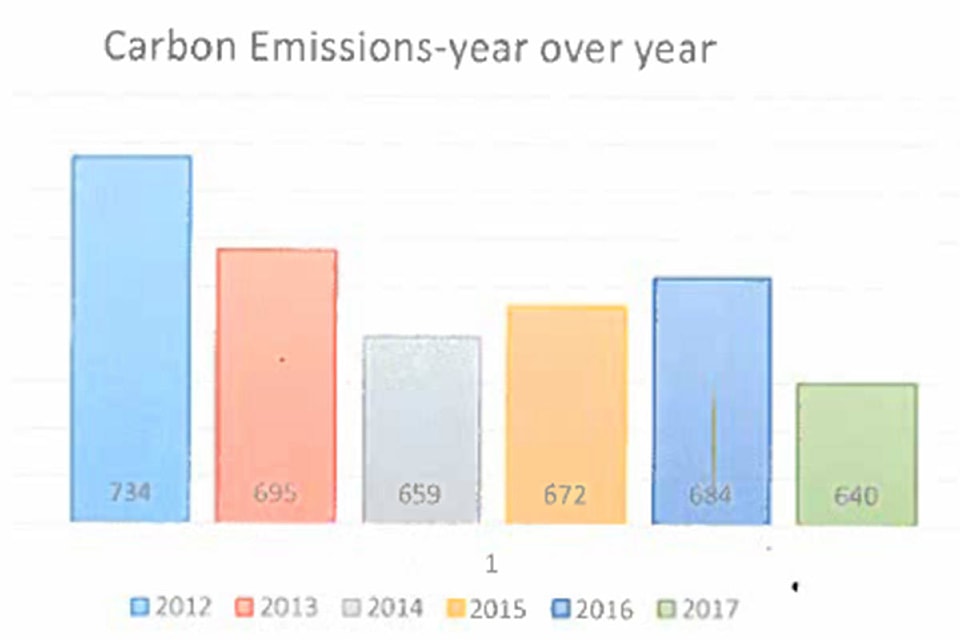Greenhouse gas emissions stemming from operations of the Regional District of Bulkley-Nechako (RDBN) dropped by roughly 44 tonnes in 2017 compared to the previous year, according to calculations by the regional district.
Last year’s carbon emissions from RDBN operations were the lowest recorded in the 2012-2017 period, reaching 640 tonnes of CO2 in 2017 compared to 684 tonnes the previous year, an RDBN report said.
Factors contributing to that year-over-year decline included reductions in travel by staff and less hauling of waste.
Certain RDBN officials “were not out in the field as much as previous years,” contributing to the reduction, the report said.
Another factor was the ban on cardboard from regional landfills and waste transfer stations, which has been in effect since mid-2016.
This initiative, meant to diminish the build-up of garbage in landfills in favour of recycling, “has reduced the volume of waste going to our sites,” resulting in lower emissions, according to the report.
But the reduction also reflects delays in the hauling of some wood waste — a consequence of manpower issues, according to the report.
A chart showing the region’s carbon emissions suggests a gradual but uneven decline in carbon emissions over the past six years.
The regional district’s output stood at 734 tonnes of CO2 in 2012, a figure that declined over the next two years to 659 tonnes, before rising again to 684 tonnes in 2016.
